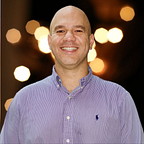Decision-making process
If you suffer to make a decision, you are probably doing it wrong.
Every decision-making process leads us to different outcomes, and it creates a new path and significantly changes us. Our brain paths, synapses, and chemistry are impacted too. Our soul has changed also.
This is one of the reasons it really pisses me off the use of the word Resilience to express our ability to “accept” to “deal” with difficult situations without “break.”
We’re organic matter and energy. When we learn anything, we’ll change when we leave a traumatic experience when someone steals our strength. But, this is a topic to go deeper in a different article.
As leaders, one of our biggest challenges is decision making, and even more remarkable is the pressure for the right, perfect decision. An overwhelming number of companies still cultivate the toxic culture of culpability. It creates and fosters an environment of fear, insecurity, and unfair competition between teams and colleagues.
So how do you make a decision with so much pressure?
The first thing we need to learn is that there are no perfect decisions. They do not exist because it is impossible to control all the problem variables, unlike a laboratory experiment. Where the only uncontrollable variable is human behavior.
Do not believe? For educational purposes only, we will analyze a laboratory procedure as an example of variable control. A laboratory must have:
- Temperature controlled
- Controlled lighting
- Controlled humidity
- Controlled equipment and supplies
- Activity record
- Trained and certified personnel
Looking at all these variables, is it possible to say that all the tests’ results will be perfect? No, it is not possible to make that statement. It is possible to say that the trend is of a low margin of failures, but the human variable is uncontrollable. A human error can happen for any reason, distraction, and emotional imbalance. Except a trained, certified professional is liable to failure.
And in many environments, these failures are marked as a lack of professionalism, which is not an absolute truth. As I commented at the beginning of this article, we are organic. We deal with problems inside and outside the work environment, and it moves us every day. Daily imperfection, energetic inconstancy are what make us unique. As long as we do not accept that we are not machines or that we are defective machines.
The pressure for perfection leads us to a continuous search without meaning.
How can I improve my process?
The first step in improving your decision-making process is to analyze the latest decisions you made. I established a habit almost 10 years ago of doing a weekly retrospective of all the decisions I made that week.
I start by answering two questions from every decision I made.
- What problem did I want to solve with this decision?
- What problem did I need to solve with this decision?
They look the same, don’t they? But when you consciously analyze a decision through the “I want” and “I need” prism, you often find very different answers.
The second step is to list the variables of the problem. Simultaneously identify which of those variables you could:
- Control (those you have direct control over)
- Influence (those you can influence the outcome)
- Monitor (which are out of your control range, affect your decision, but can be monitored.)
The third and last step in this retrospective exercise is to review your decision. Now that you have identified the motivators and variables, the construction engineer question is ready; today, would you make the same decision?If the answer is no, don’t despair.
Take a deep breath and accept that you did the best you could at that moment. The most important question in this step is:
Whether it is still possible to go back on the decision you made? If not, again, don’t beat yourself up.Take this opportunity to learn from this exercise.
Practice is everything
After a few months of doing this weekly exercise, you will likely begin to incorporate this mental process daily.
What is the advantage of this? It will not mean that your decisions will be perfect, but they will be better and more conscious every day. And the most significant impact for you when you come to understand the motivations and variables will be clarity about the outcome of these decisions.
I have been adapting and adjusting this process over the years. It was vital for me to learn Cynefin to help me build my own process.
A decision-making process can be translated into an equation with several different variables. The key of this process is to identify, categorize, measure, and monitor these variables. Don’t measure everything, do it only for the key variables.
I hope this article will help you in the first steps of a healthier decision-making process.
